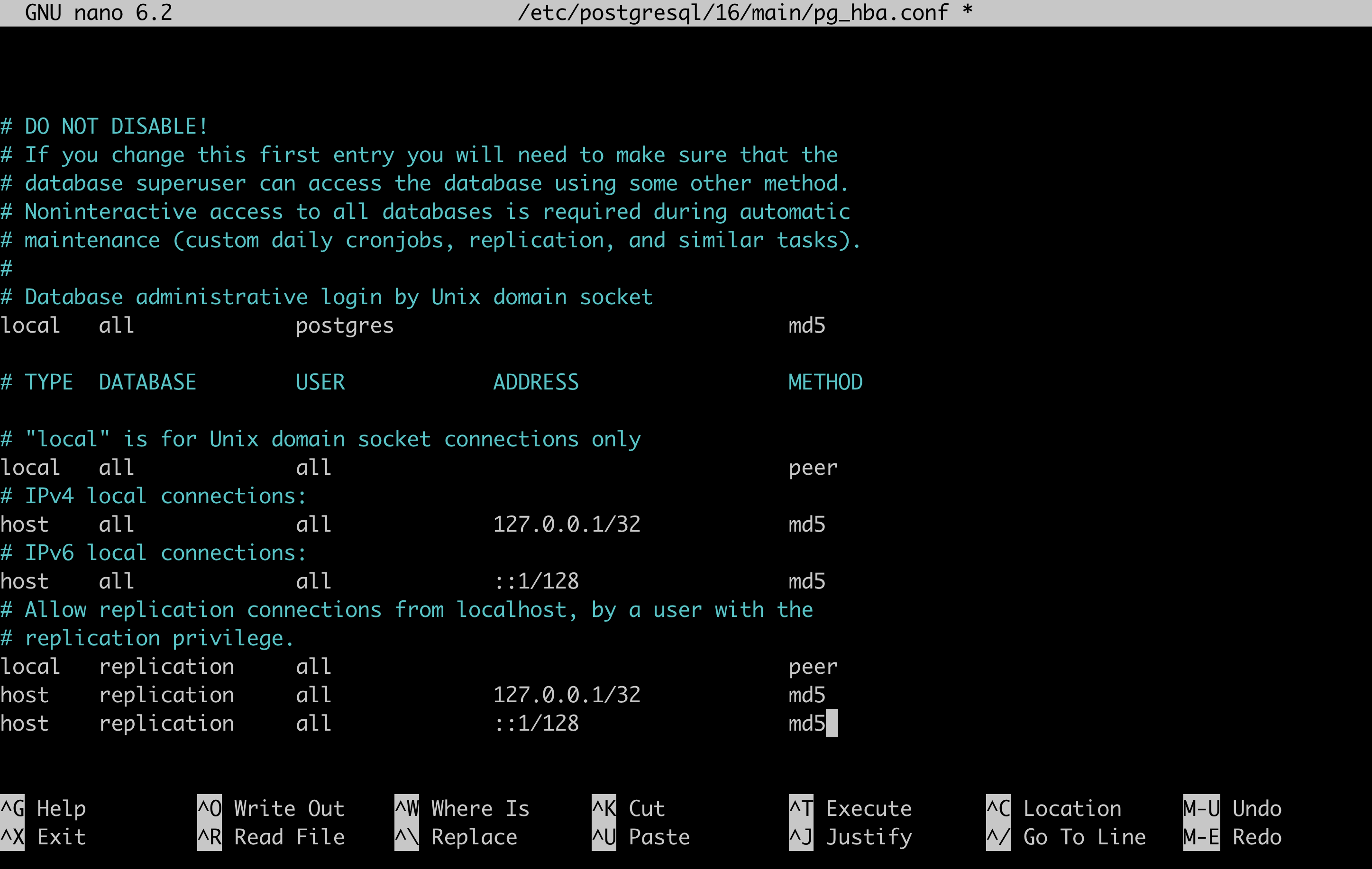Setting up Seshat in a local macOS environment
Prerequisites
Seshat requires the following software to be installed on your machine:
Python 3
PostgreSQL 16 with PostGIS
GDAL
GEOS
Installation instructions for prerequisites
Python 3
Ensure you have a working installation of Python 3. The application has been tested with Python 3.8.13.
If you don’t have Python installed, you can download it from the official website.
PostgreSQL and PostGIS
Ensure you have a working installation of PostgreSQL with PostGIS. The application has been tested with PostgreSQL 16.
If you don’t have the software installed, you can use the instructions on Postgres’ website to install it on macOS.
GDAL and GEOS
Ensure you have a working installation of GDAL and GEOS.
Hint
If you need to install Homebrew, you can find instructions on how to do so on Homebrew’s website.
If you don’t have them, you can install them using Homebrew.
Then use Homebrew to install gdal and geos:
$ brew install gdal geos
Step 1: Set up a virtual environment for the project
You can use either Conda or Python’s built-in venv module to create a virtual environment for the project.
Create the environment:
$ conda create --name seshat python=3.8.13
Activate the environment:
$ conda activate seshat
Create the environment:
$ python3.8 -m venv seshat
Activate the environment:
$ source seshat/bin/activate
Step 2: Clone the repo
Using your Terminal, clone the repository:
$ git clone https://github.com/Seshat-Global-History-Databank/seshat
Step 3: Create an empty database and add the PostGIS extension
Hint
Note that you’ll have to use ; to end each SQL command. They will not work without this character.
In order to create a database, open psql in the terminal:
$ psql postgres
In the database, run the following SQL command to create a new database. Note that you should replace <seshat_db_name> with the name you want to give the database:
CREATE DATABASE <seshat_db_name>;
Exit out of the psql program:
\q
Then open the database using the name you just created in place of <seshat_db_name>:
$ psql postgres -d <seshat_db_name>
Now, you can add the PostGIS extension to your database:
CREATE EXTENSION postgis;
Step 4: Configure GDAL and GEOS
Hint
Note: If you installed GDAL and GEOS using Homebrew, you can find the paths to the installations by running brew info gdal and brew info geos.
The paths should look something like /opt/homebrew/Cellar/gdal/3.9.0_1 and /opt/homebrew/Cellar/geos/3.9.1.
Open seshat/settings/base.py and check (or update) the paths in the following variables, which should be to the paths to your local gdal and geos installations:
GDAL_LIBRARY_PATHGEOS_LIBRARY_PATH
Note: there are hardcoded paths in base.py for the Mac and Ubuntu instructions above included.
Step 5: Install the Python packages
Install the Python packages in your environment (some packages have these as dependencies).
From the top level of the seshat directory, run the following commands to install the packages from the requirements.txt file and the django-geojson package:
$ pip install -r requirements.txt
$ pip install "django-geojson [field]"
Step 6: Seshat database setup
Restore Seshat database from dump file:
$ psql -U postgres -d <seshat_db_name> -f /path/to/file.dump
Step 7: Secure the database
Add a password to the database for security.
Add a password for the superuser by logging in to the database with your superuser:
$ psql -U postgres
Send the following SQL command to set the password for the superuser. Make sure to replace <db_password> with your desired password (and make sure to remember it):
ALTER USER postgres WITH PASSWORD '<db_password>';
Locate pg_hba.conf if you don’t know where it is
$ psql -U postgres -c 'SHOW hba_file;'
Update postgres to use md5 with nano /path/to/pg_hba.conf

Step 8: Set up environment variables for connecting to the database
Create a configuration file with your database info for Django. The presence of this file will ensure Django connects to your local database.
Within the repo, create a file called seshat/settings/.env with the database connection variables.
Get a Cesium access token
You will also need to generate an access token for Cesium in order for the globe to render on Seshat pages that include maps.
Visit the Cesium website and create an account.
Once you have an account, navigate to the “Access Tokens” tab and create a new token.
Add this token to the .env file as shown below.
The file should look like this:
DB_NAME=<seshat_db_name>
DB_USER=postgres
DB_HOST=localhost
DB_PORT=5432
DB_PASSWORD=<db_password>
CESIUM_ION_ACCESS=<cesium_access_token>
Step 9: Migrate the database
Ensure that all Django database migrations have run:
$ python manage.py migrate
Step 10: Collect static files
$ python manage.py collectstatic
Step 11: Load the shape data
If the shape data tables are not yet populated in your copy of the Seshat core database and you have access to source data, populate one or more of them with the instructions here.
Step 12: Run Django
$ python manage.py runserver
The webapp should be visible in a browser at http://127.0.0.1:8000/